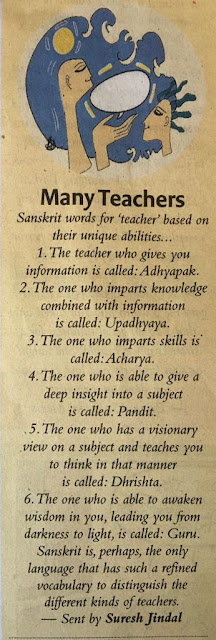Shastra-vakyartha - Traditional Epistemological evaluation – Its need in the field of Yoga - A Note
The above is the video of a Traditional Shastric discussion on the definition of Yoga - Citta-vritti-nirodha by Vidvan Dr.Maheshvaran, Faculty, Samskrita College - Chennai. This program happened in Kashi 12-14 July.
The soundness of the definition of Citta-vritti-nirodha has been evaluated by Sri Maheshvaran using tools of Epistemology, with intellectual rigor in this Video. The other scholars around him were are involved in this churning in a very objective and critical manner.
My observations after keenly listening to the video are recorded below.
Yoga is a global subject. Yoga is being subjected to Empirical research models to measure its efficacy.
How to examine Yoga in the traditional Shastric intellectual frame work? This video is a classical example. This has not been done for a long time. This has to become main stream in the field of Yoga. Why?
What kind of Yoga is being subjected to empirical evaluation?
The Yogic wisdom from textual sources and living traditions of Yoga based on the textual traditions. Such traditional wisdom is being fortified by rigorous traditional epistemological methods of evaluation - shastra vakyartha. It is these traditional evaluation systems in the form of Vakyartha sabhas that help to define and refine and revise the existing textual and traditional knowledge.
This is how so many ancient systems of knowledge like Ayurveda, Vedanta and Yoga have survived and have remained relevant even now and universally applicable.
Further, Acharya Shri Krishnamacharya was able to adapt Yoga for the modern needs successfully because he was endowed with Shastric acumen to refine and redefine the traditional wisdom.
Only such Yoga will survive and will stand the test of time. The soul of Yoga will die if there is intellectual stagnation and if Yogic wisdom is not subjected such evaluations.
No discipline can progress in which wisdom is merely handed down without examination! (Borrowed wisdom).
Look at the clarity of this speaker in the video, who is not old at all. Clarity is
not an exclusive privilege of anybody. Clarity is due to his learning in Samskrita and the epistemological frameworks therein. Samskrita-shastra learning empowers every individual and endows clarity.
Further, being in the field of Yoga now for a decade, I can say with certainty that tenets of Yoga which are considered inaccessible by Yoga teachers - can be accessed and understood without much difficulty by learning Samskrita which will give access to millennia of wisdom of Yogis and great intellectuals.
Translations of words and sentences can be made. But frameworks of Shastras and their epistemological approach to subjects can be imbibed only by learning Samskrita-shastra under a traditional teacher. When one imbibes such frameworks of understanding and examination - higher experiences can happen in Yoga.
Vyasa in his commentary to Yogasutras provides an important insight regarding the constituents of Yoga-Anubhava (1.48) -
आगमेनानुमानेन ध्यानाभासरसेन च ।
त्रिधा प्रकल्पयन् प्रज्ञां लभते योगमुत्तमम्॥
āgamenānumānena dhyānābhāsarasena ca ।
tridhā prakalpayan prajñāṃ labhate yogamuttama1m॥
Great Yoga is reached by knowledge from the scriptures conveyed through the teachers (aagama), inferences, logical verification and epistemological evaluation of the teachings (anumana) and blissful experience generated by deep meditation on the truths that have passed through the first two stages.
What is displayed in this Video is the about the second aspect of the above definition - Anumana, which is a vital link between Learning and Practice.
Anumana is of two types
a) Traditional epistemological evaluation
b) Current day empirical evaluation.
Both are essential. As everyone is aware, currently, Anumana of the second type is promoted everywhere. The first type is being neglected, which will result in loss of knowledge and quality of the content. One would only be clutching the straws if the Anumana of the first type is neglected too long.
For Yoga to survive and flourish dynamically- for the well-being of the entire humanity –- a beneficial blend of traditional-intellectual-epistemological evaluation model (Shastra-vakyartha – powered by Samskrita learning) with empirical examination model has to be achieved.
Or else one need not be surprised to read columns in newspaper that say - Practising yoga does not require a knowledge of Sanskrit (https://www.thehindu.com/society/history-and-culture/whats-in-a-name/article23759801.ece)
Will policy makers in the field of Yogic teaching and learning take note?


Comments
Post a Comment